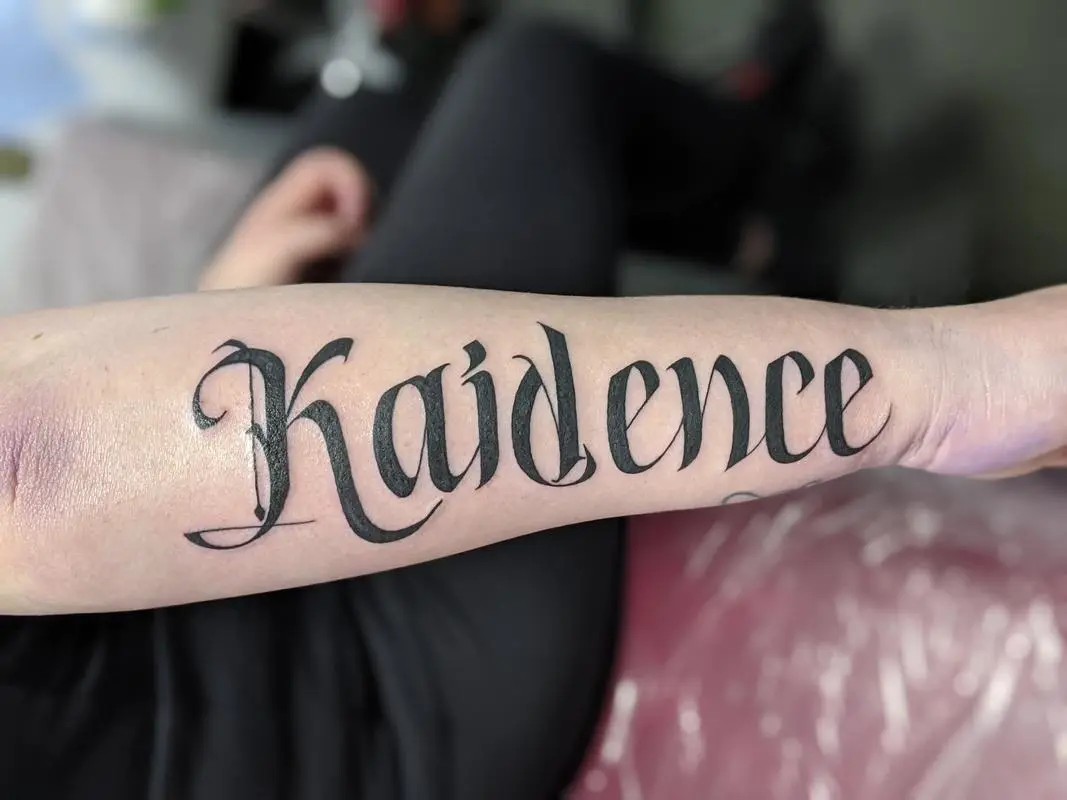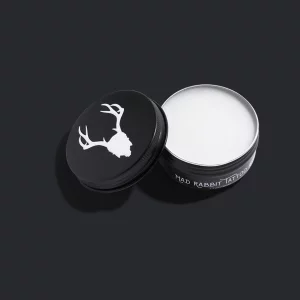
The Comprehensive Guide to Laser Tattoo Removal: Delving Deeper into the Science
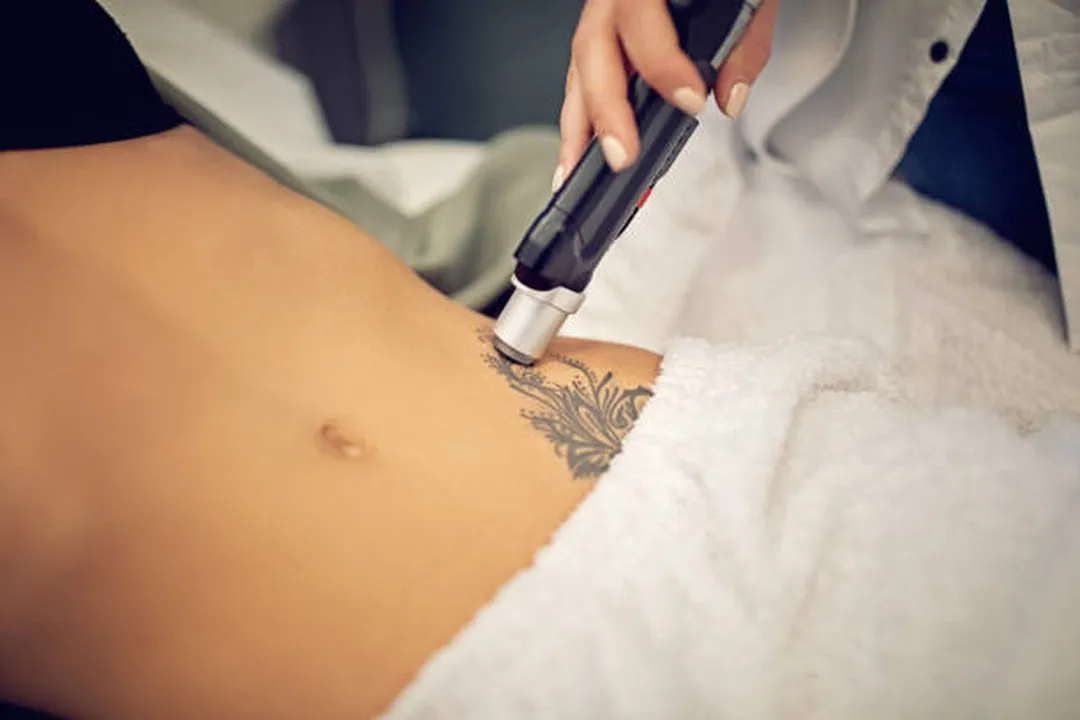
Tattoos, once a permanent mark of expression, no longer have to be a lifelong commitment, thanks to the advancements in laser technology. Laser tattoo removal, a solution that has risen in popularity, is a testament to modern dermatology’s wonders. This guide delves into the depths of laser tattoo removal, exploring every facet of this fascinating procedure.
For those getting their first tattoo and pondering its permanence, consider our piece on Should I Get a Tattoo? 7 Things to Consider Before Taking the Plunge.
The Essence of Laser Tattoo Removal
At its core, laser tattoo removal is a sophisticated process that employs high-intensity light to break down and eliminate tattoo ink from the skin. Let’s embark on a journey to understand this procedure in detail, starting with the types of lasers that make this possible.
Diverse Lasers for Diverse Ink

Laser tattoo removal is not a one-size-fits-all approach. The choice of laser depends on various factors, such as the ink’s color and the individual’s skin type. The main types of lasers used include:
- Laser Type: Frequency-doubled Q-switched Nd: YAG
- Wavelength: 532 nm
- Tattoo Pigment: Red, orange, yellow, purple
- Additional Facts: More effective for the removal of red and yellow pigment than other QS lasers.
- Laser Type: Q-switched Ruby
- Wavelength: 694 nm
- Tattoo Pigment: Black, blue, green
- Additional Facts: Wavelength is well absorbed by melanin, which may lead to hypopigmentation. Caution in darker skin types.
- Laser Type: Q-switched Alexandrite
- Wavelength: 755 nm
- Tattoo Pigment: Black, blue, green
- Additional Facts: Wavelength is well absorbed by melanin, which may lead to hypopigmentation. Caution in darker skin types.
- Laser Type: Q-switched Nd: YAG
- Wavelength: 1064 nm
- Tattoo Pigment: Black, blue, green
- Additional Facts: Minimal effect on surrounding epidermis and melanocytes, causing decreased risk of blistering and hypopigmentation. Safe in Fitzpatrick IV-VI skin types.
Or to paraphrase:
- Q-switched Nd:YAG: Highly effective for darker ink colors and suitable for various skin types.
- Q-switched Alexandrite: Optimal for targeting green and blue inks.
- Q-switched Ruby: Best for black, blue, and green inks, especially on lighter skin tones.
Each laser type operates on a specific wavelength, making it more effective against certain ink colors than others.
Understanding the Science of Laser Tattoo Removal
Tattoo removal has come a long way with the advent of laser technology. When it comes to erasing the once-permanent ink on our skin, lasers offer a non-invasive solution with increasing effectiveness and minimal side effects.
The Scientific Mechanism: Photothermolysis
The process hinges on the principle of photothermolysis. Here, the laser directs concentrated light energy onto the tattoo, which the ink particles absorb. This absorption causes the ink to heat up and disintegrate into smaller fragments. The accompanying diagram simplifies the intricate process of laser tattoo removal.
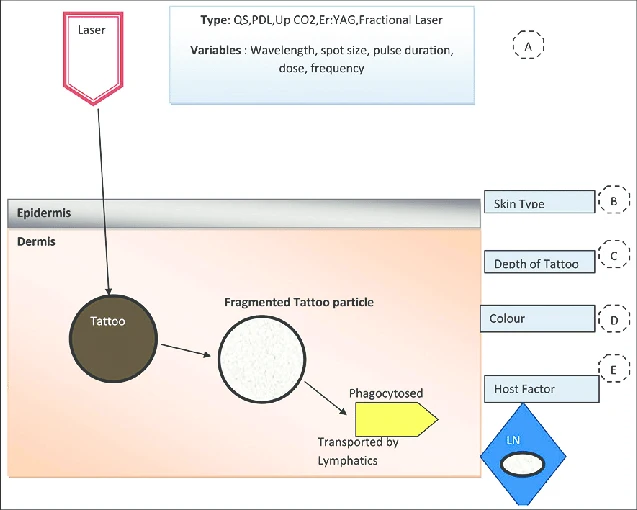
Selective Photothermolysis: Targeting Ink, Preserving Skin
Selective photothermolysis ensures the laser targets only the tattoo ink while sparing the surrounding skin. This precision prevents unnecessary damage to the skin and reduces the risk of scarring.
How Lasers Break Down Tattoo Ink
Lasers remove tattoos by breaking down the pigment colors with a high-intensity light beam. In the diagram, you can see that different laser types, each with specific wavelengths, are used to target different ink colors. Black tattoo pigment absorbs all laser wavelengths, making it the easiest to treat. Other colors can only be targeted by selected lasers based on the pigment color.
The Role of the Body’s Immune System
Once the laser breaks the ink into smaller fragments, the body’s immune system takes over. The diagram illustrates how these fragmented particles are phagocytosed, or engulfed, by immune cells and then transported away by the lymphatics to be processed and eliminated from the body.
The Dance of Wavelengths and Ink Colors
Different ink colors absorb different wavelengths of light. For instance, black ink, which absorbs all light wavelengths, is best targeted by the 1064 nm wavelength, while red ink, which absorbs green light, responds to the 532 nm wavelength.
Factors Influencing Tattoo Removal Effectiveness
Several factors affect the success rate of laser tattoo removal. As shown on the right side of the diagram, skin type, ink depth, color, and the individual’s immune response, all play a critical role in the process. It’s important to consider these factors when estimating the number of sessions required for complete removal.
Safety and Considerations
The diagram we discussed earlier also underscores the importance of taking into account the skin type to prevent side effects like hypopigmentation. Advanced laser systems are adept at precisely targeting tattoo ink, sparing the surrounding skin, and ensuring the safety of the procedure across various skin types. This attention to safety and individual care is paramount, similar to the commitment we have to our clients at Faithful Tattoo Studio.
Just as with tattoo removal, getting a tattoo at our studio comes with the assurance of safety, comfort, and personalized attention. We’ve detailed what clients can expect from their first tattoo experience in our What To Expect When Getting A Tattoo At Faithful Tattoo Studio post. From the initial consultation to the aftercare process, our team ensures each client is well-informed, comfortable, and confident throughout their tattoo journey.
Laser tattoo removal is a testament to the remarkable capabilities of modern dermatological treatments. By understanding the basics of how the procedure works, as illustrated in our diagrams, individuals looking to remove their tattoos can approach the process with the knowledge and confidence they deserve. It’s about providing clarity and care—principles we uphold whether you’re coming in for a new tattoo or looking to remove an old one.
Laser tattoo removal is a testament to the remarkable capabilities of modern dermatological treatments. By understanding the basics of how the procedure works, as illustrated in our diagram, individuals looking to remove their tattoos can approach the process with knowledge and confidence.
Personalized Treatment Plans: Tailoring to Individual Needs
The journey to complete tattoo removal is unique to each individual. Factors influencing the number of sessions include the tattoo’s size, age, color density, and the person’s skin type. On average, it takes about 5 to 10 sessions to achieve significant fading, with each session spaced 6 to 8 weeks apart.
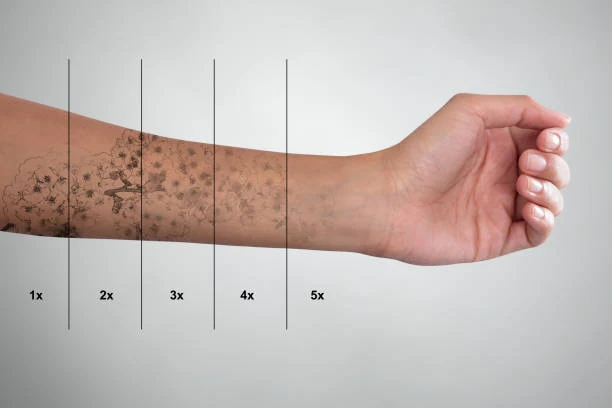
Aftercare: A Critical Component
Post-treatment care is essential for optimal results and swift healing. This includes keeping the area clean, avoiding sun exposure, and applying prescribed ointments to prevent infections.
Navigating the Risks and Side Effects
While laser tattoo removal is safe for most people, it has risks. Potential side effects include temporary skin discoloration, swelling, blistering, and, in rare cases, scarring.
Advances in Laser Technology: Pushing the Boundaries
The field of laser tattoo removal is ever-evolving, with ongoing research and development aimed at improving efficacy, reducing pain, and minimizing side effects.
Economic and Accessibility Considerations
The cost of laser tattoo removal can be a significant factor for many. It varies based on the tattoo’s complexity, size, and the number of sessions required. Accessibility also depends on geographical location and availability of specialized clinics.

In Conclusion: The Art of Removing Art
Laser tattoo removal is a remarkable achievement in cosmetic dermatology, offering a safe and effective way to undo the once-permanent ink on our skin. It’s a process that erases ink and offers individuals a chance to redefine their stories.
FAQs About Laser Tattoo Removal
Here are some of the most common questions about laser tattoo removal:
What Determines the Number of Sessions Needed for Complete Removal?
The number of sessions required varies based on several factors, including the age of the tattoo, the density and color of the ink, the depth of the ink in the skin, and the individual’s skin type. On average, it can take 5 to 10 sessions, each spaced 6 to 8 weeks apart.
How Does Skin Type Affect Laser Tattoo Removal?
Different skin types can respond differently to laser treatment. People with lighter skin typically have a lower risk of pigmentation changes following treatment. Darker skin types may require a more cautious approach to minimize the risk of hyperpigmentation or hypopigmentation.
Can Laser Tattoo Removal Completely Erase a Tattoo?
While laser tattoo removal can significantly fade most tattoos, complete erasure isn’t always possible. Factors like ink quality, depth, and color can affect the outcome. In some cases, a faint shadow or remnants of the tattoo might remain.
Is Laser Tattoo Removal Painful?
The pain associated with laser tattoo removal varies from person to person. Many describe the sensation as similar to a rubber band snapping against the skin. Pain management options like numbing creams or local anesthesia are available to reduce discomfort during the procedure.
Are There Any Side Effects or Risks Associated with Laser Tattoo Removal?
Common side effects include redness, swelling, blistering, and tenderness in the treated area. These usually resolve within a few days to weeks. Rare risks include scarring, infection, and skin texture or color changes.
How Should I Prepare for a Laser Tattoo Removal Session?
Preparation for a laser tattoo removal session involves avoiding sun exposure to the tattooed area for several weeks prior, keeping the area clean, and avoiding certain medications or supplements that may increase the risk of bleeding or bruising.
What Is the Post-Treatment Care for Laser Tattoo Removal?
Post-treatment care includes keeping the treated area clean and dry, applying prescribed ointments, avoiding sun exposure, and avoiding picking at any blisters or scabs that form. It’s also important to follow any specific instructions the treatment provider gives.
How Do I Choose a Qualified and Experienced Laser Tattoo Removal Specialist?
When choosing a specialist, look for qualifications in laser therapy, experience specifically in tattoo removal, positive reviews or testimonials from previous clients, and the use of FDA-approved laser equipment. A consultation before the procedure can also provide insights into their expertise and approach.
Begin Your Ink Journey at Faithful Tattoo Studio in Denham Springs, LA

As we explore the intricate world of laser tattoo removal and the art of transformation, it’s clear that every tattoo has a story. But the beauty of this journey is not just in changing or erasing the old—it’s also in creating new memories and expressions that last a lifetime.
At Faithful Tattoo Studio in Denham Springs, LA, we’re passionate about crafting tattoos that resonate with your personal story and style. Our team of experienced artists is dedicated to providing a comfortable, creative, and professional environment where your vision becomes a reality. We pride ourselves on our attention to detail, artistic excellence, and a deep commitment to customer satisfaction.
Whether it’s your first tattoo or an addition to your collection, Faithful Tattoo Studio is here to guide you through each step of the process, from design to aftercare. Embrace the opportunity to create new art you’ll love and cherish for years.
Embark on Your Artistic Adventure with Faithful Tattoo Studio:
